Key Controlling Factors of Deep Coalbed Methane Reservoir Characteristics in Yan’an Block, Ordos Basin: Based on Multi-Scale Pore Structure Characterization and Fluid Mobility Research
Abstract
1. Introduction
2. Regional Geological Background
2.1. Location and Structural Characteristics of the Study Area
2.2. Target Coal Seam and Burial Characteristics
2.3. Coal Petrology and Thermal Evolution Characteristics
3. Materials and Methods
3.1. Basic Properties of Coal Samples
3.2. Multi-Scale Pore Structure Characterization
3.2.1. High Pressure Mercury Intrusion Experiment (MIP)
3.2.2. Low Temperature Liquid Nitrogen Adsorption Experiment (LT-N2GA)
3.2.3. Low Temperature Carbon Dioxide Adsorption Experiment (LP-CO2GA)
3.3. Low-Field Nuclear Magnetic Resonance Fluid Mobility Test
3.4. Microscopic Morphology and Pore Visualization
3.5. Data Analysis and Integration
3.5.1. Full Aperture Distribution Reconstruction
3.5.2. Quantitative Characterization of Fractal Dimension
3.5.3. Correlation Analysis of Statistical Methods
3.5.4. Medium Hole Tortuosity and Seepage Porosity
4. Result
4.1. Coal Sample Characteristics
4.2. Classification of Pore Structure
4.3. Nuclear Magnetic Resonance Fluid Mobility
5. Discussion
5.1. Synergistic Control of Gas Occurrence-Migration by Multi-Scale Pore Network
5.2. Fractal and Connectivity Quantification of Pore Structure
5.3. Nuclear Magnetic Resonance Fluid Mobility Response
5.4. Pore-Permeability–Gas Synergistic Relationship
6. Conclusions
Author Contributions
Funding
Data Availability Statement
Conflicts of Interest
References
- Feng, P.; Li, S.; Tang, S.; Tang, D.; Zhang, C.; Yang, J.; Liu, N.; Zhong, G. Estimation of Adsorption Isotherm for Deep Coalbed Methane: A Monolayer-Filling Model Based on Pore Fractal Dimension. Energy Fuel 2024, 38, 1987–2000. [Google Scholar] [CrossRef]
- Lupton, N.; Connell, L.D.; Heryanto, D.; Sander, R.; Camilleri, M.; Down, D.I.; Pan, Z. Enhancing biogenic methane generation in coalbed methane reservoirs–Core flooding experiments on coals at in-situ conditions. Int. J. Coal Geol. 2020, 219, 103377. [Google Scholar] [CrossRef]
- Zhao, J.; Tian, S.; Chen, C.; Zhang, X.; Ma, T.; Ran, Q.; Luo, X. Research on the performance and application of nano-MgO modified ultrafine cement-based sealing materials. Case Stud. Constr. Mater. 2025, 22, e04694. [Google Scholar] [CrossRef]
- Xu, F.; Hou, W.; Xiong, X.; Xu, B.; Wu, P.; Wang, H.; Feng, K.; Yun, J.; Li, S.; Zhang, L.; et al. The status and development strategy of coalbed methane industry in China. Pet. Explor. Dev. 2023, 50, 765–783. [Google Scholar] [CrossRef]
- Tao, S.; Chen, S.; Pan, Z. Current status, challenges, and policy suggestions for coalbed methane industry development in China: A review. Energy Sci. Eng. 2019, 7, 1059–1074. [Google Scholar] [CrossRef]
- Zhao, J.; Tian, S.; Jiang, Z.; Ma, T.; Ran, Q. Effect of silica nanofluid on coal wettability and its stability characterization. Phys. Fluids 2025, 37, 022015. [Google Scholar] [CrossRef]
- Wang, T.; Deng, Z.; Hu, H.; Ding, R.; Tian, F.; Zhang, T.; Ma, Z.; Wang, D. Pore structure of deep coal of different ranks and its effect on coalbed methane adsorption. Int. J. Hydrogen Energy 2024, 59, 144–158. [Google Scholar] [CrossRef]
- Hao, H.; Jiu, B.; Huang, W.; Sun, M. Distribution and modes of occurrence of Nb in subbituminous coal: A case study from the Jungar Coalfield, Ordos Basin, China. Sci. Total Environ. 2024, 946, 174362. [Google Scholar] [CrossRef]
- Li, S.; Qin, Y.; Tang, D.; Shen, J.; Wang, J.; Chen, S. A comprehensive review of deep coalbed methane and recent developments in China. Int. J. Coal Geol. 2023, 279, 104369. [Google Scholar] [CrossRef]
- Xie, H.; Li, X.; Xue, F.; Sui, H.; Zhao, J.; Cai, J.; Feng, C. Influences of Evolution of Pore Structures in Tectonic Coal Under Acidization on Methane Desorption. ACS Omega 2023, 8, 34059–34076. [Google Scholar] [CrossRef]
- Mou, P.; Pan, J.; Niu, Q.; Wang, Z.; Li, Y.; Song, D. Coal Pores: Methods, Types, and Characteristics. Energy Fuels 2021, 35, 7467–7484. [Google Scholar] [CrossRef]
- Zhang, Q.; Tang, S.; Zhang, S.; Xi, Z.; Xin, D.; Jia, T.; Yang, X.; Zhang, K.; Li, J.; Wang, Z. Methane Adsorption Capacity of Deep Buried Coal Seam Based on Full-Scale Pore Structure. Nat. Resour. Res. 2025, 34, 1481–1505. [Google Scholar] [CrossRef]
- Niu, Q.; Pan, J.; Cao, L.; Ji, Z.; Wang, H.; Wang, K.; Wang, Z. The evolution and formation mechanisms of closed pores in coal. Fuel 2017, 200, 555–563. [Google Scholar] [CrossRef]
- Xie, H.; Sang, S.; Li, X.; Yan, Z.; Zhou, X.; Liu, S.; Han, S.; Cai, J. Competitive adsorption-penetration characteristics of multi-component gases in micro-nano pore of coal. Chem. Eng. J. 2025, 506, 159965. [Google Scholar] [CrossRef]
- Shi, F.; Wang, K.; Lou, Y.; Su, C.; Lan, B.; Xia, P.; Shao, L.; Qin, C. Influence of Imbibition Fracturing Fluid on the Original Water and Methane Occurrence in Actual Coalbed Methane Reservoirs Using the Integrated Device of Displacement and Low-Field Nuclear Magnetic Resonance. Langmuir 2024, 40, 3063–3073. [Google Scholar] [CrossRef]
- Liu, X.; Chen, J.; Liu, B.; Wang, S.; Liu, Q.; Luo, J. Effects of seepage pressure on the mechanical behaviors and microstructure of sandstone. J. Rock Mech. Geotech. Eng. 2024, 16, 2033–2051. [Google Scholar] [CrossRef]
- Zhang, J.; Hu, Q.; Chang, X.; Qin, Z.; Zhang, X.; Marsh, S.; Grebby, S.; Agarwal, V. Water Saturation and Distribution Variation in Coal Reservoirs: Intrusion and Drainage Experiments Using One- and Two-Dimensional NMR Techniques. Energy Fuels 2022, 36, 6130–6143. [Google Scholar] [CrossRef]
- Han, S.; Wang, S.; Guo, C.; Sang, S.; Xu, A.; Gao, W.; Zhou, P. Distribution of the adsorbed density of supercritical CO2 onto the anthracite and its implication for CO2 geologic storage in deep coal. Geoenergy Sci. Eng. 2024, 234, 212624. [Google Scholar] [CrossRef]
- Ding, Y.; Li, B.; Li, J.; Tang, C.; Song, H.; Yang, J. Characteristics of CO2 adsorption influenced by coal pore structure-temperature interaction, including its implications for geological storage. Chem. Eng. J. 2025, 518, 164626. [Google Scholar] [CrossRef]
- Xu, A.; Han, S.; Wei, Y.; Zhou, P.; Zhang, J.; Guo, Z. Methane Adsorption During Pore Evolution and Its Microscale Impact on Coalbed Methane Recovery: A Case Study of Middle- and High-Rank Coals in the Western Guizhou. ACS Omega 2025, 10, 14439–14451. [Google Scholar] [CrossRef]
- Li, C.; Yang, Z.; Yan, X.; Zhou, G.; Wang, G.; Gao, W.; Liu, C.; Lu, B.; Liang, Y. Distribution Law of Occurrence State and Content Prediction of Deep CBM: A Case Study in the Ordos Basin, China. Nat. Resour. Res. 2024, 33, 1843–1869. [Google Scholar] [CrossRef]
- GB/T 23561-2009; Methods for Determining the Physical and Mechanical Properties of Coal and Rock—Part 7: Methods for Determining the Uniaxial Compressive Strength and Counting Softening Coefficient. Available online: https://www.chinesestandard.net/PDF/English.aspx/GBT23561.7-2009 (accessed on 23 July 2025).
- Thommes, M.; Kaneko, K.; Neimark, A.V.; Olivier, J.P.; Rodriguez-Reinoso, F.; Rouquerol, J.; Sing, K.S.W. Physisorption of gases, with special reference to the evaluation of surface area and pore size distribution (IUPAC Technical Report). Pure Appl. Chem. 2015, 87, 1051–1069. [Google Scholar] [CrossRef]
- Miao, Z.; Qiu, Z.; Guofu, L.; Xuehai, F.; Chaochao, D.; Huihu, L.; Hongjie, X. Fluid distribution and pore structure multifractal characteristics analysis of coal measure mudstone. J. Nat. Gas Sci. Eng. 2021, 88, 103810. [Google Scholar] [CrossRef]
- Wang, N.; Du, Y.; Fu, C.; Ma, X.; Zhang, X.; Wang, J.; Wang, N. Experimental Study on Spontaneous Imbibition of Coal Samples of Different Ranks Based on the NMR Relaxation Spectrum. ACS Omega 2023, 8, 33526–33542. [Google Scholar] [CrossRef]
- Xie, H.; Li, X. Microstructure and nanomechanical characterization of tectonic coal based on SEM, AFM, XRD and DSI. Surf. Interfaces 2024, 46, 104158. [Google Scholar] [CrossRef]
- Fu, C.; Du, Y.; Song, W.; Sang, S.; Pan, Z.; Wang, N. Application of automated mineralogy in petroleum geology and development and CO2 sequestration: A review. Mar. Pet. Geol. 2023, 151, 106206. [Google Scholar] [CrossRef]
- Wang, F.; Liu, Z.; Yue, H. Prediction of gas–water relative permeability in tight rock from movable fluid distribution with nuclear magnetic resonance. Phys. Fluids 2023, 35, 033609. [Google Scholar] [CrossRef]
- Xie, H.; Li, X.; Sui, H.; Cai, J.; Xu, E.; Zhao, J. Acidification-Induced Micronano Mechanical Properties and Microscopic Permeability Enhancement Mechanism of Coal. Langmuir 2024, 40, 4496–4513. [Google Scholar] [CrossRef]
- Liu, Z.; Han, J.; Yang, H.; Lv, J.; Dong, S. A new model for coal gas seepage based on fracture-pore fractal structure characteristics. Int. J. Rock Mech. Min. Sci. 2024, 173, 105626. [Google Scholar] [CrossRef]
- Wang, F.; Li, S. Determination of the Surface Fractal Dimension for Porous Media by Capillary Condensation. Ind. Eng. Chem. Res. 1997, 36, 1598–1602. [Google Scholar] [CrossRef]
- Zhang, B.; Li, S. Determination of the Surface Fractal Dimension for Porous Media by Mercury Porosimetry. Ind. Eng. Chem. Res. 1995, 34, 1383–1386. [Google Scholar] [CrossRef]
- Hu, B.; Cheng, Y.; Pan, Z. Classification methods of pore structures in coal: A review and new insight. Gas Sci. Eng. 2023, 110, 204876. [Google Scholar] [CrossRef]
- Zhang, K.; Cheng, Y.; Wang, L.; Dong, J.; Hao, C.; Jiang, J. Pore morphology characterization and its effect on methane desorption in water-containing coal: An exploratory study on the mechanism of gas migration in water-injected coal seam. J. Nat. Gas Sci. Eng. 2020, 75, 103152. [Google Scholar] [CrossRef]
- Wang, L.; Du, Y.; Wu, G.; Fu, X.; Xu, C.; Pan, Z. Application of nuclear magnetic resonance technology in reservoir characterization and CO2 enhanced recovery for shale oil: A review. Mar. Pet. Geol. 2025, 177, 107353. [Google Scholar] [CrossRef]
- Yao, Y.; Liu, D.; Che, Y.; Tang, D.; Tang, S.; Huang, W. Petrophysical characterization of coals by low-field nuclear magnetic resonance (NMR). Fuel 2010, 89, 1371–1380. [Google Scholar] [CrossRef]
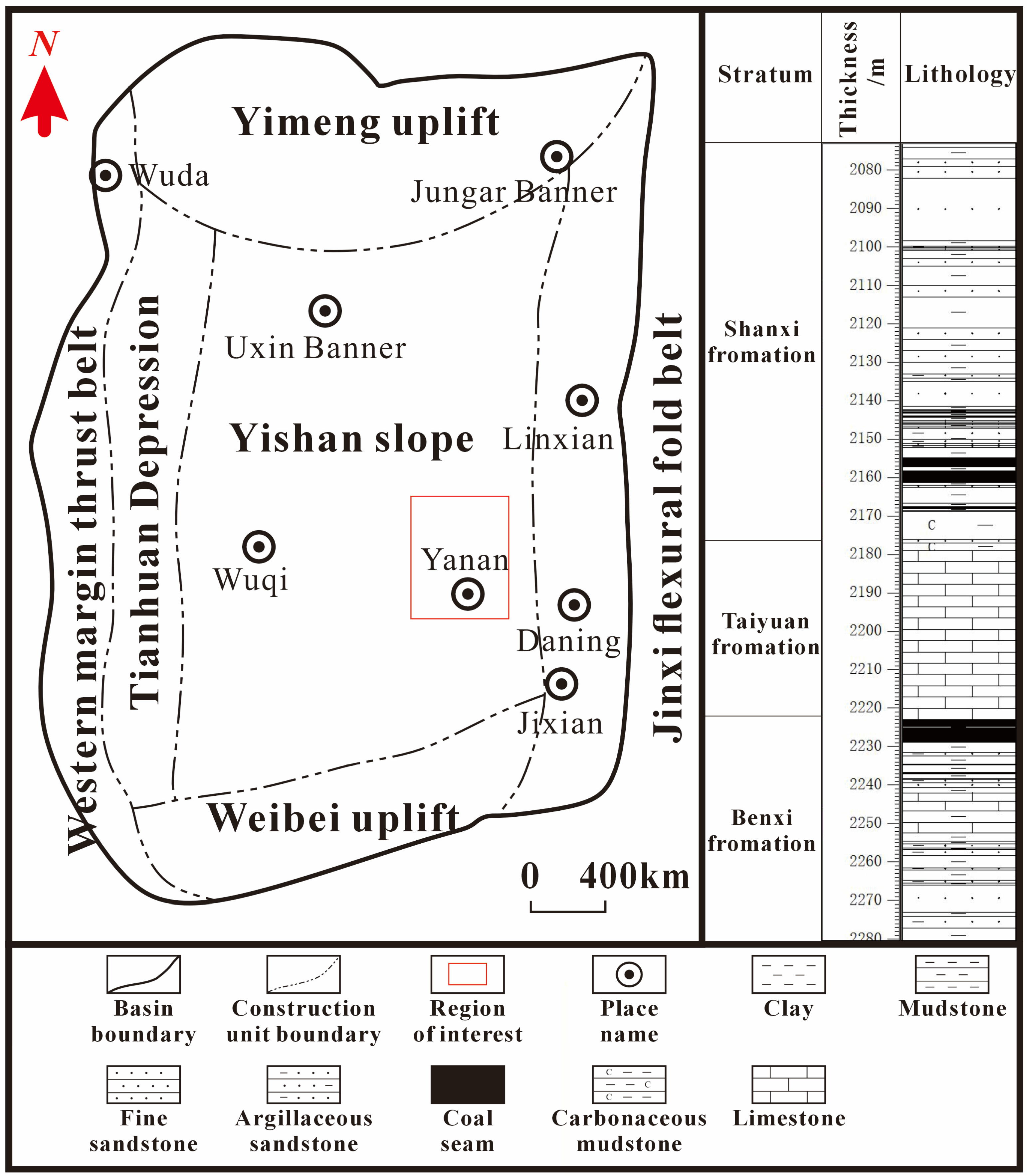
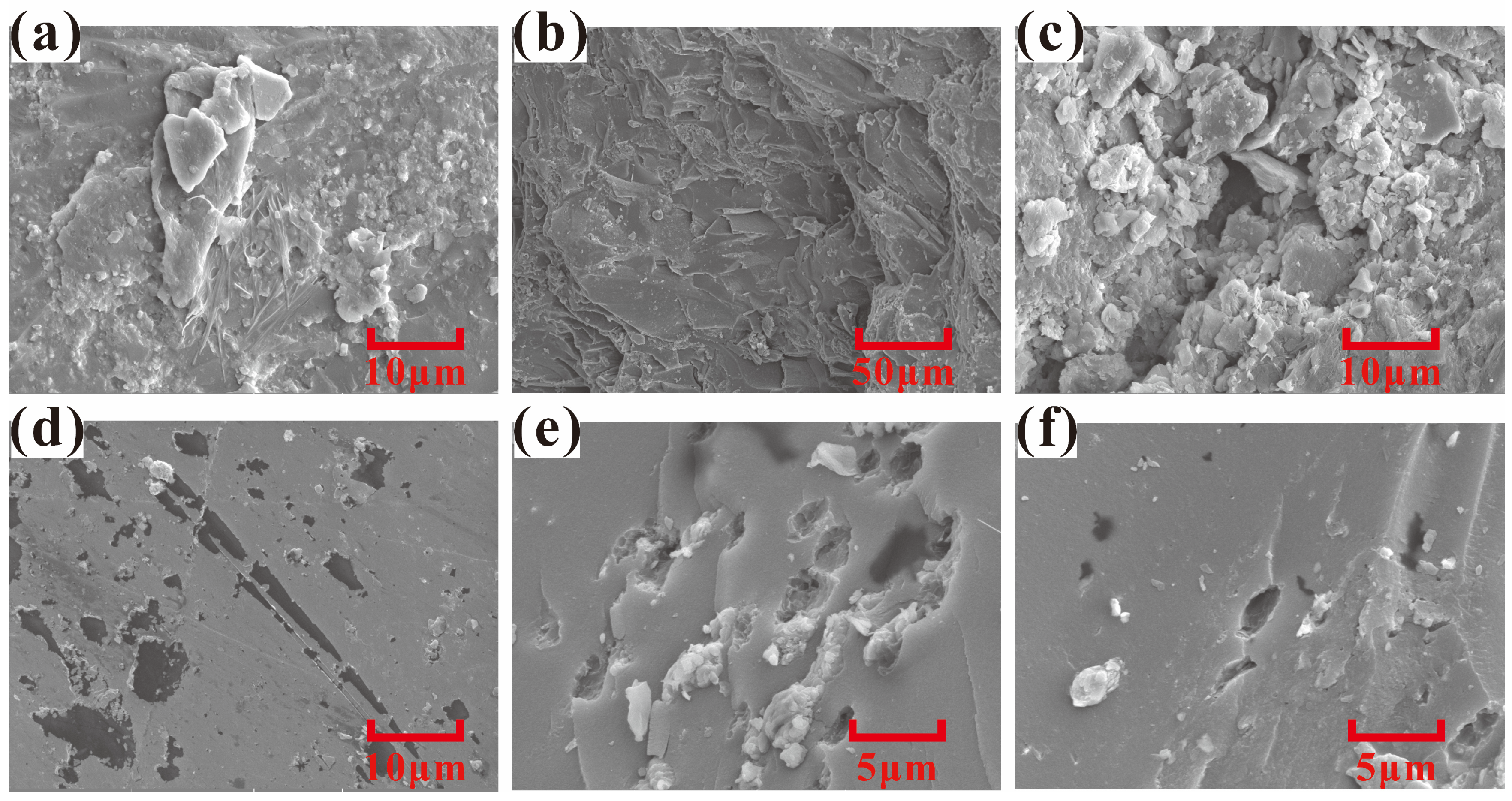
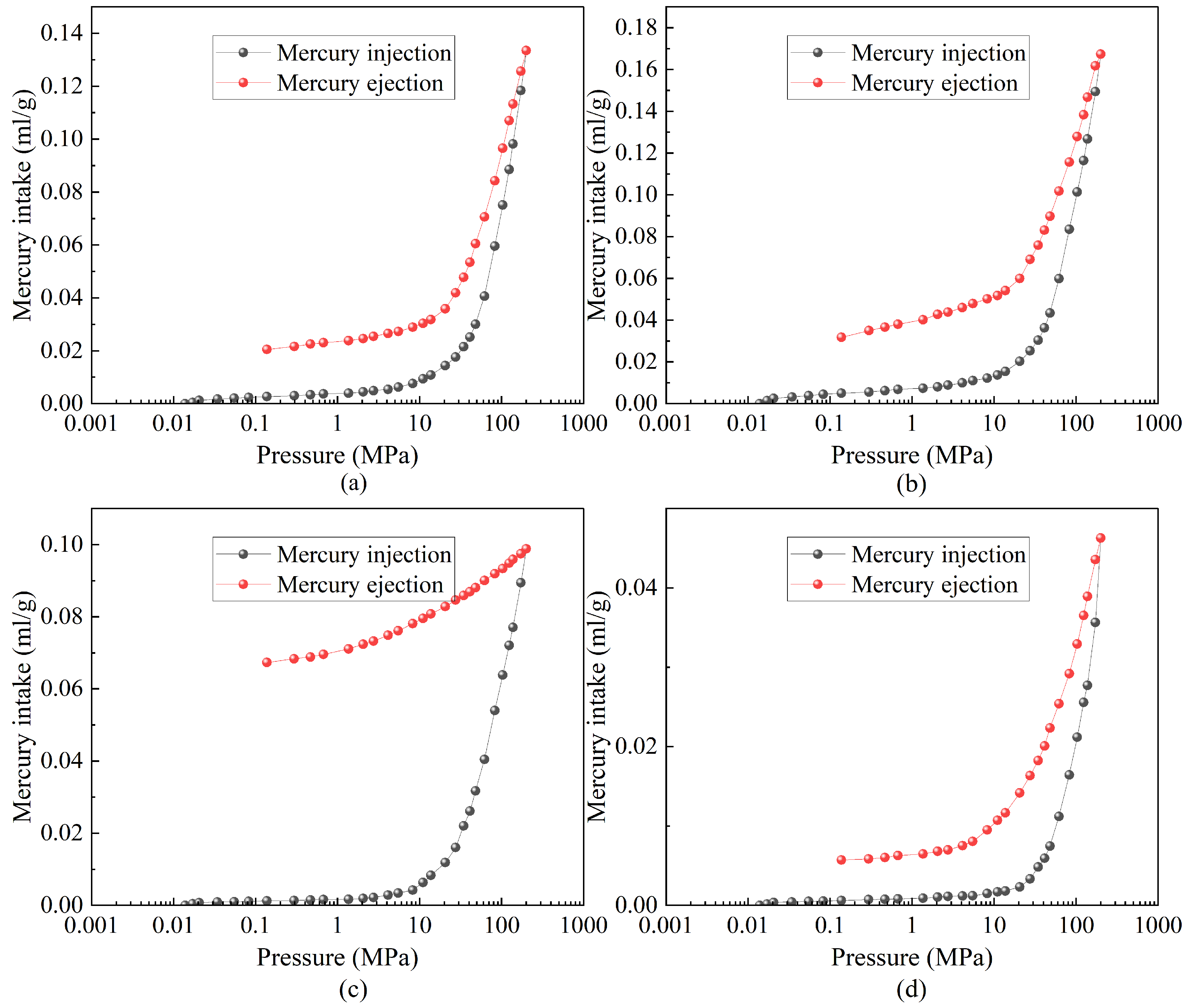
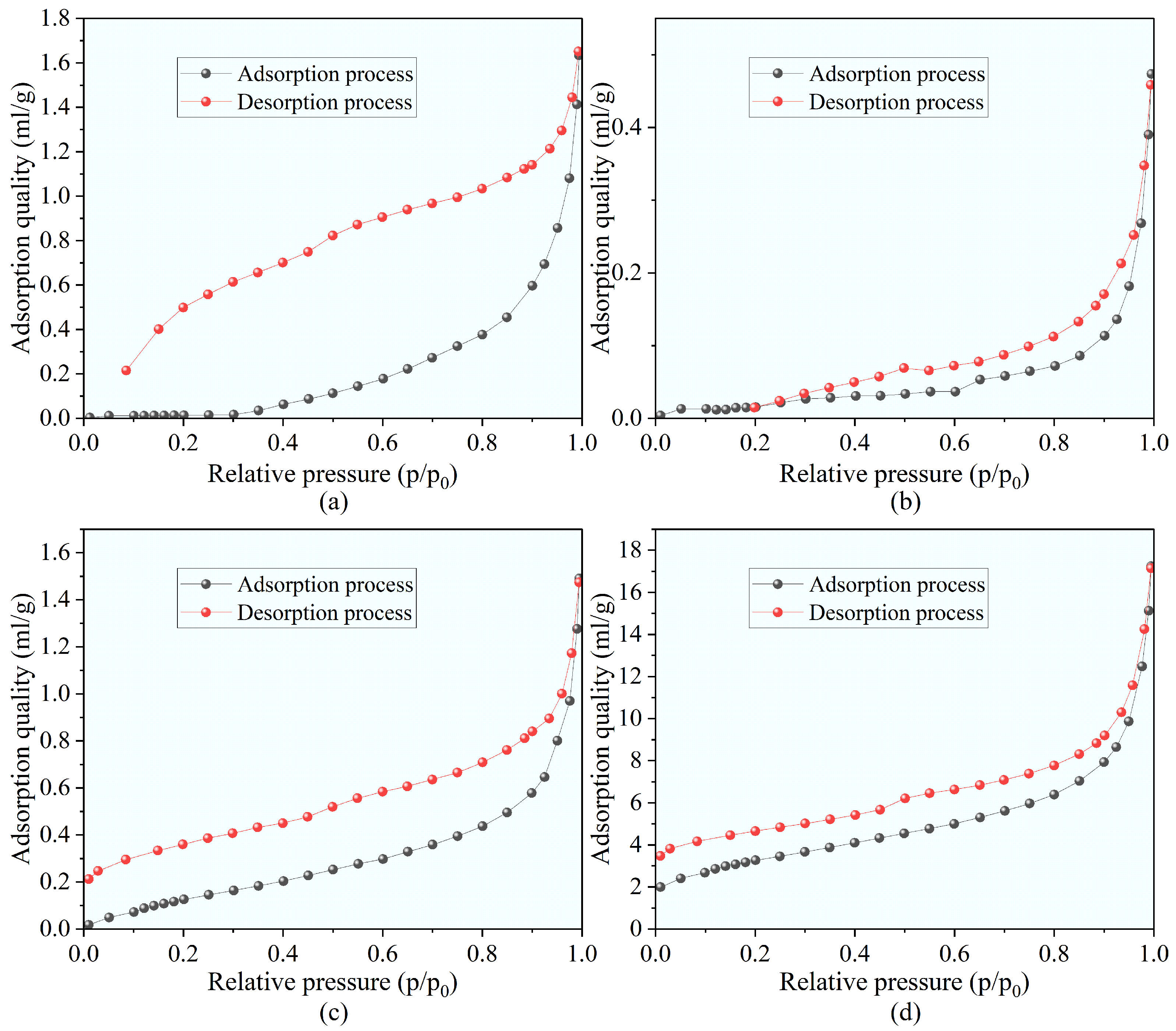
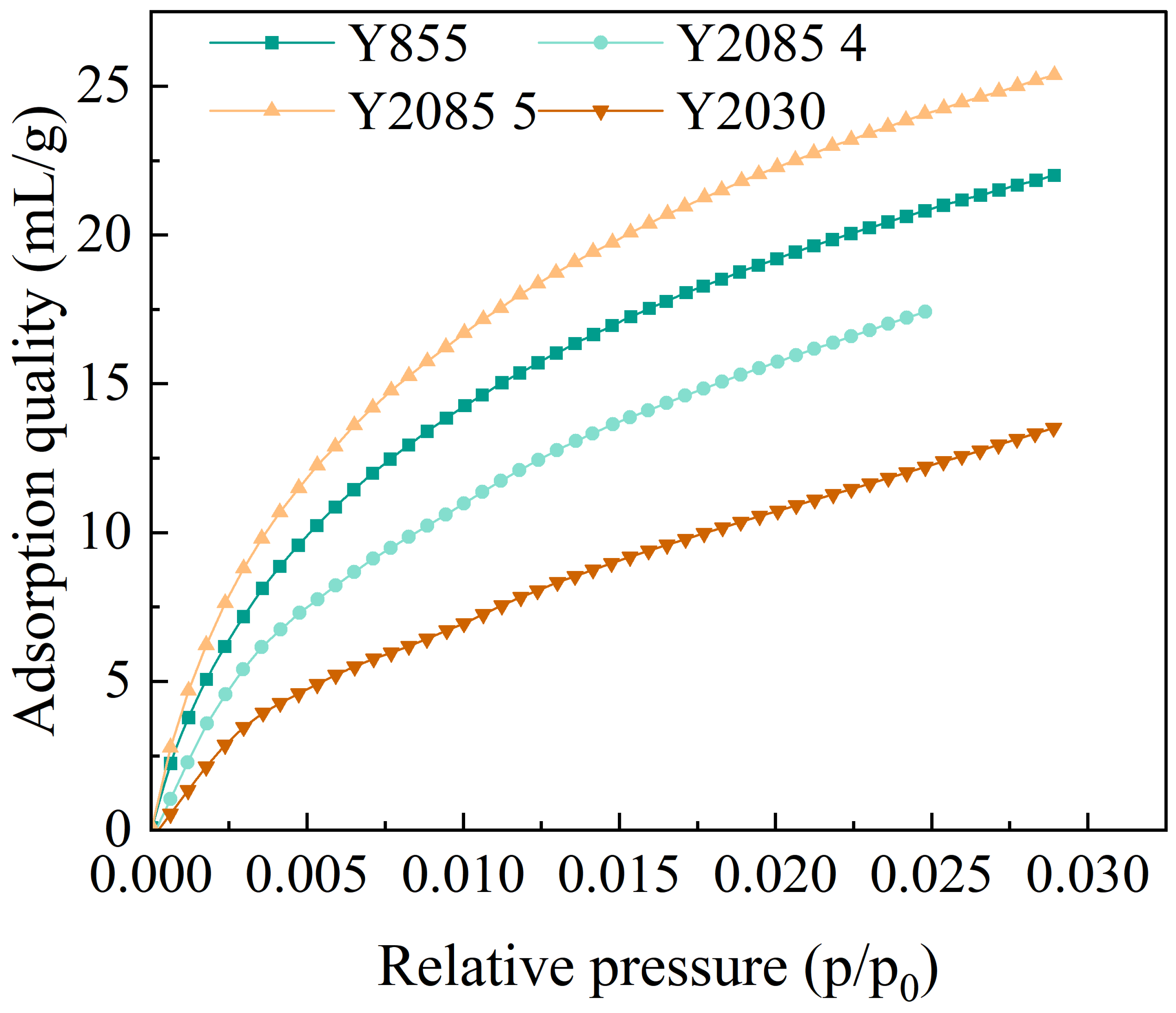
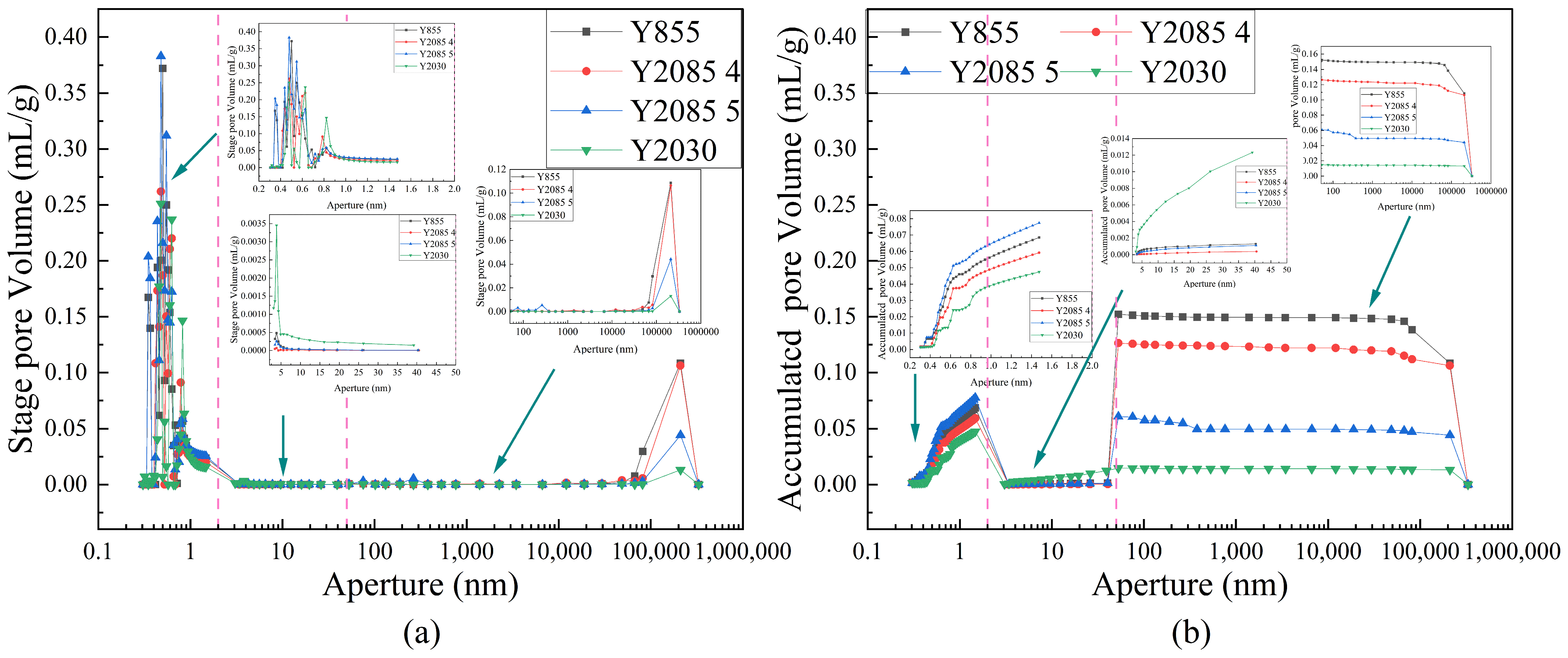
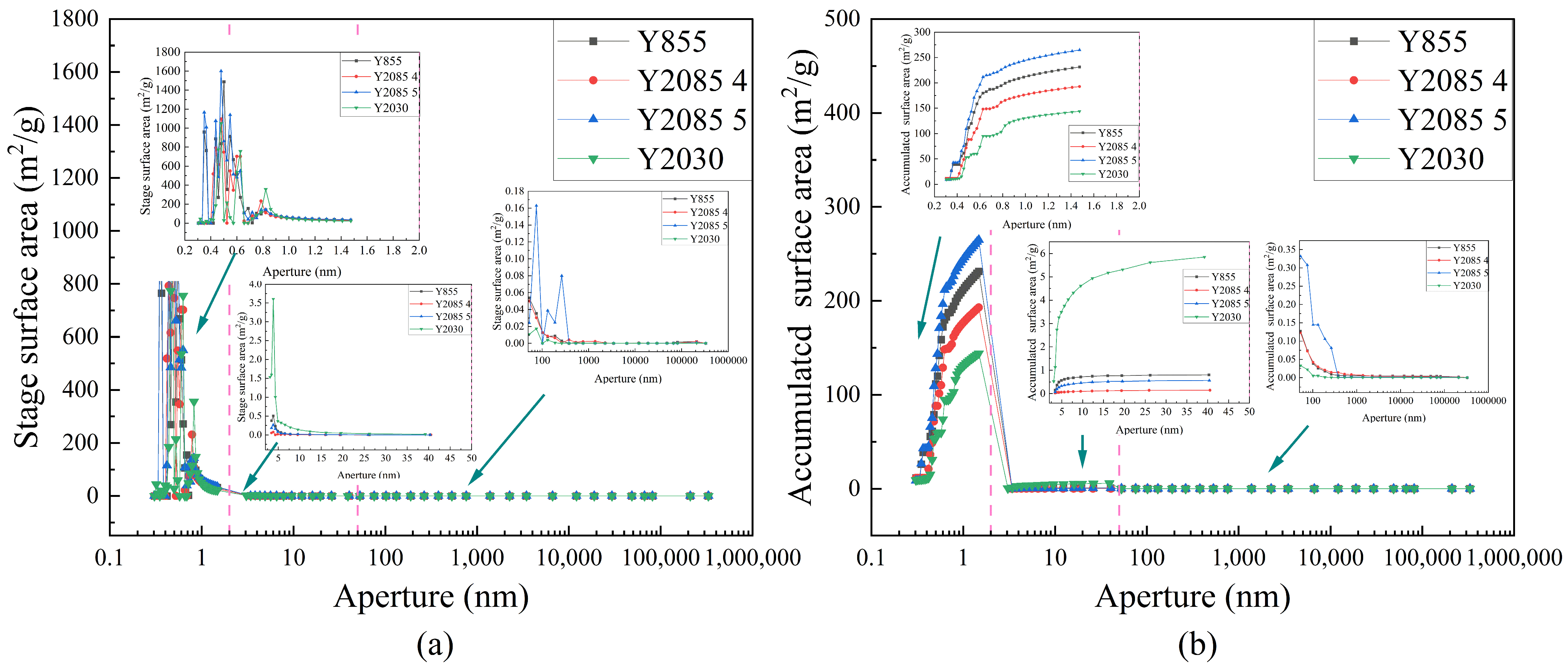
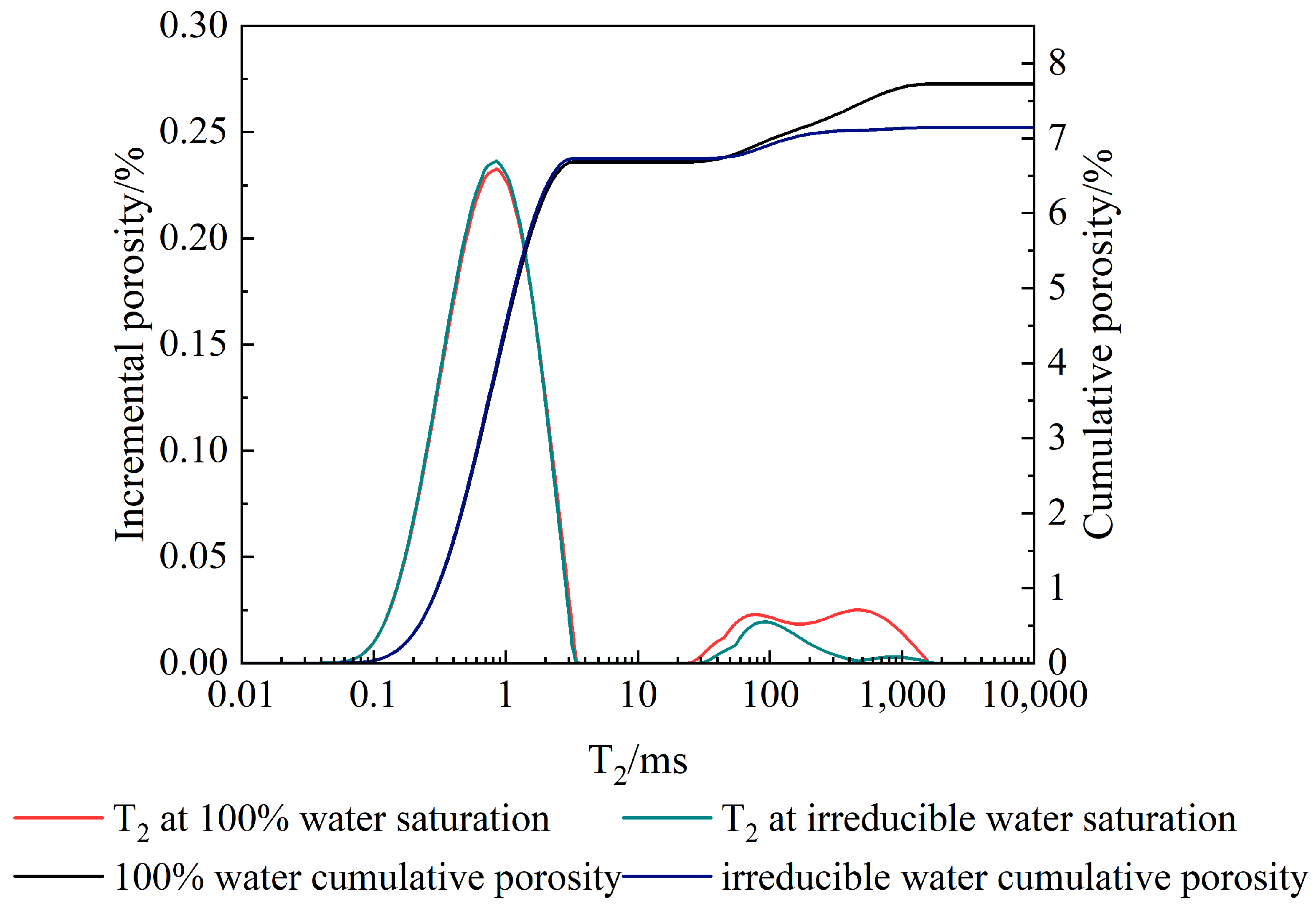

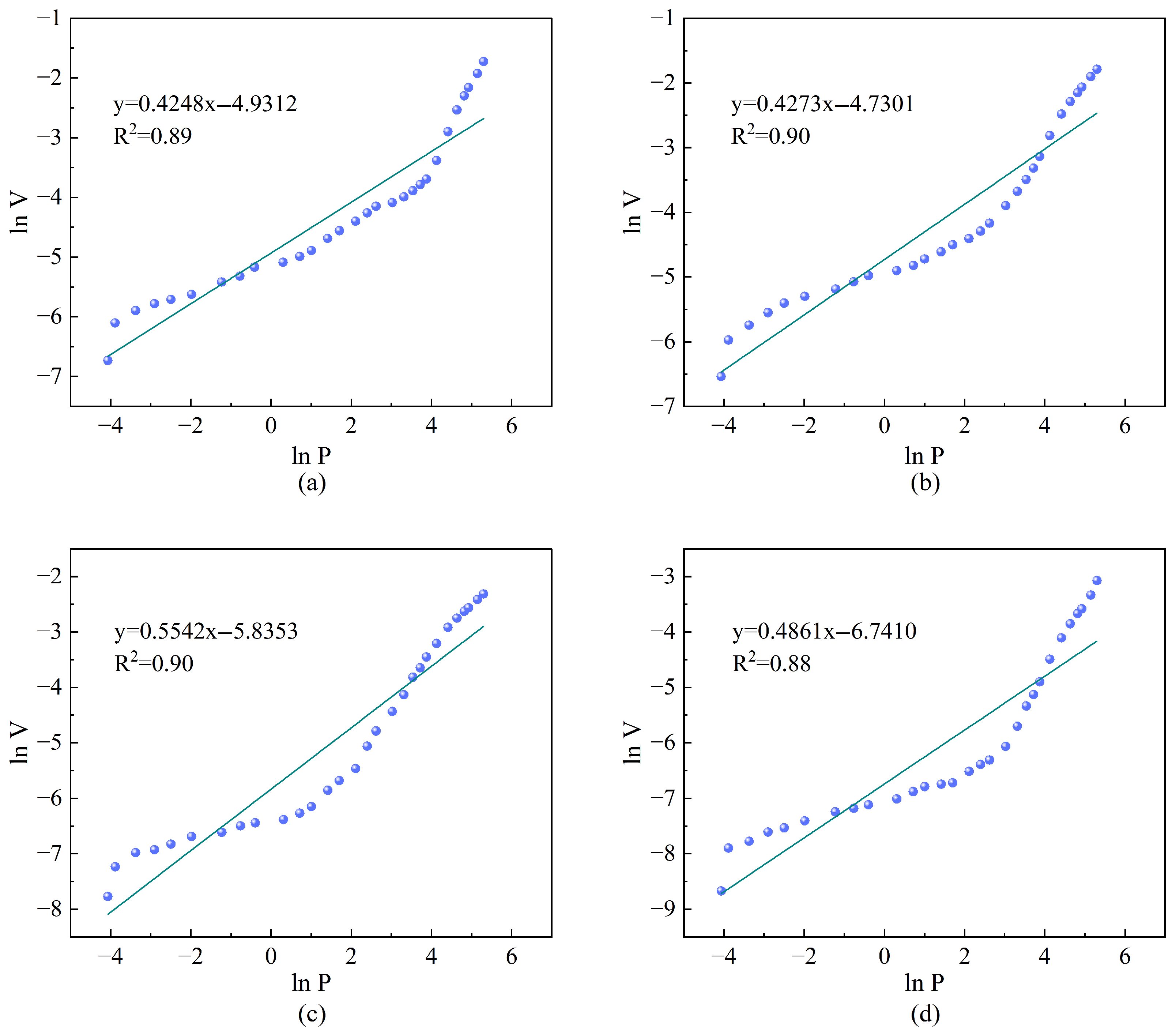
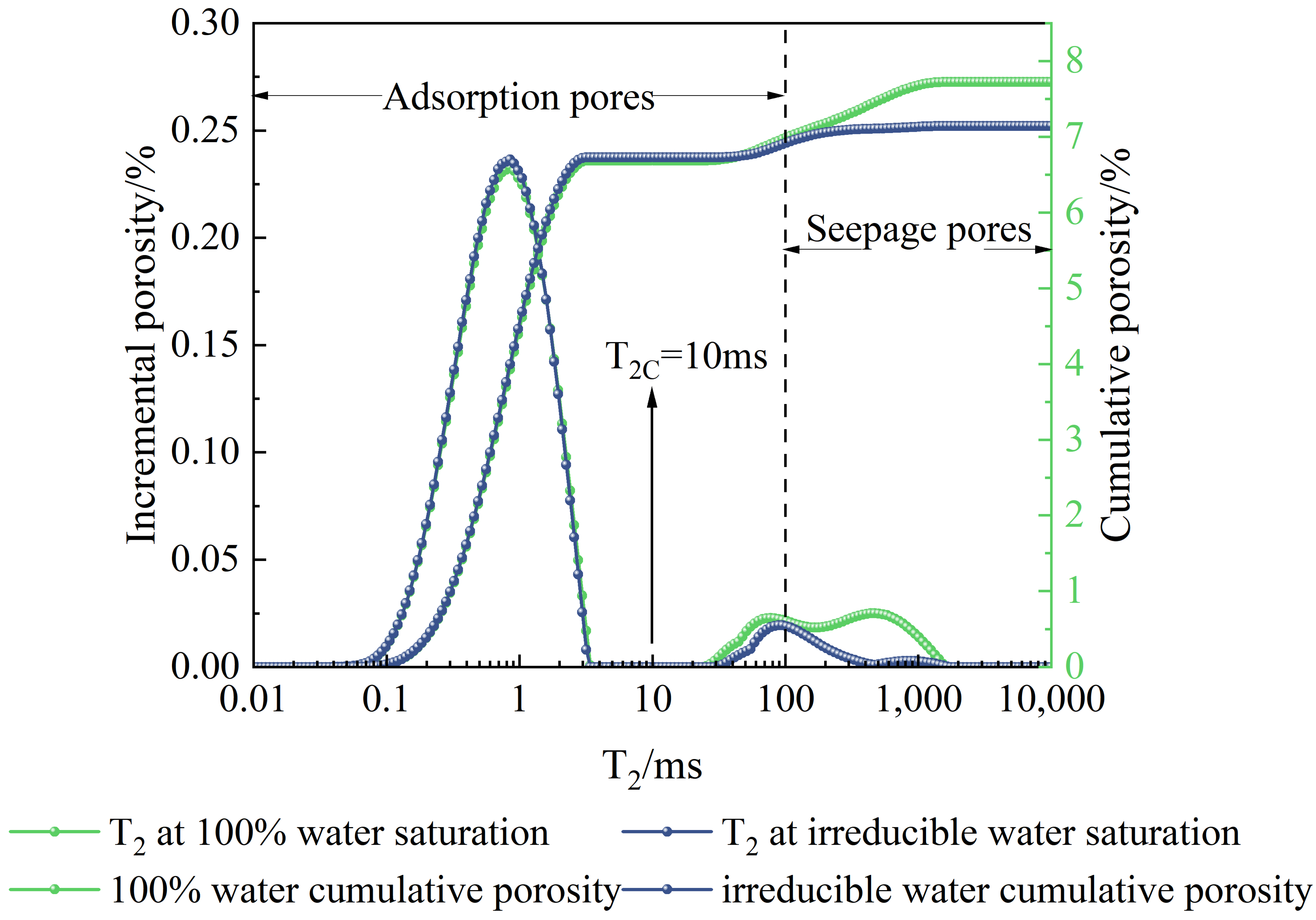

| Parameter | Yan’an Block | Daning-Jixian Area | South Yanchuan Block |
|---|---|---|---|
| Target coal seam | Shanxi group 5 #, Benxi group 8 # coal | Shanxi group 5 # coal | Shanxi group 5 #, Benxi group 8 # coal |
| Buried depth range (m) | 2200–3000 | 1500–2200 | 1800–2500 |
| The average thickness of 5 # coal (m) | 3.5 | 4.2 | 3.6 |
| The average thickness of 8 # coal (m) | 2.2 | - | 2.3 |
| Ro,max (%) | >2.0 | 1.8–2.2 | 2.0–2.5 |
| Geothermal gradient (°C/100 m) | 2.8 | 3.0 | 2.9 |
| Specimen | Density g/cm3 | Vitrinite Reflectivity Ro,max | Coal Maceral Content/% | Industrial Analysis/% | ||||
|---|---|---|---|---|---|---|---|---|
| Vitrinite/% | Inertinite/% | Lipid Group and Mineral Composition/% | Mad | Aad | Vdaf | |||
| Y2015-B1-4 | 1.66 | 4.06 | 85.9 | 12.8 | 1.3 | 1.42 | 9.56 | 5.71 |
| Y2015-B1-2 | 1.56 | 4.38 | 85.3 | 13.6 | 1.1 | 0.93 | 6.78 | 5.92 |
| Y1560-B1-1 | 1.87 | 2.04 | 62.7 | 32.7 | 4.6 | 0.54 | 46.39 | 22.54 |
| Y1557-S2-3 | 1.44 | 1.86 | 51.3 | 41.7 | 7 | 0.58 | 12.94 | 14.33 |
| Sample Number | Full Aperture Pore Volume (mL/g) | Full Aperture Specific Surface Area (m2/g) | ||||||
|---|---|---|---|---|---|---|---|---|
| Total Pore Volume | Micropore | Mesopore | Macropore | Total Surface Area | Micropore | Mesopore | Macropore | |
| Y855 | 0.2396 | 0.0690 | 0.0020 | 0.1686 | 238.0980 | 231.2580 | 0.8190 | 6.0210 |
| Y2085 4 | 0.2036 | 0.0590 | 0.0010 | 0.1436 | 199.2550 | 192.7640 | 0.1590 | 6.3320 |
| Y2085 5 | 0.1460 | 0.0770 | 0.0020 | 0.0670 | 267.9600 | 264.8420 | 0.5840 | 2.5340 |
| Y2030 | 0.0913 | 0.0470 | 0.0220 | 0.0223 | 152.7620 | 143.8560 | 6.1730 | 2.7330 |
Disclaimer/Publisher’s Note: The statements, opinions and data contained in all publications are solely those of the individual author(s) and contributor(s) and not of MDPI and/or the editor(s). MDPI and/or the editor(s) disclaim responsibility for any injury to people or property resulting from any ideas, methods, instructions or products referred to in the content. |
© 2025 by the authors. Licensee MDPI, Basel, Switzerland. This article is an open access article distributed under the terms and conditions of the Creative Commons Attribution (CC BY) license (https://creativecommons.org/licenses/by/4.0/).
Share and Cite
Sun, J.; Han, S.; Liu, S.; Lin, J.; Li, F.; Liu, G.; Shi, P.; Teng, H. Key Controlling Factors of Deep Coalbed Methane Reservoir Characteristics in Yan’an Block, Ordos Basin: Based on Multi-Scale Pore Structure Characterization and Fluid Mobility Research. Processes 2025, 13, 2382. https://doi.org/10.3390/pr13082382
Sun J, Han S, Liu S, Lin J, Li F, Liu G, Shi P, Teng H. Key Controlling Factors of Deep Coalbed Methane Reservoir Characteristics in Yan’an Block, Ordos Basin: Based on Multi-Scale Pore Structure Characterization and Fluid Mobility Research. Processes. 2025; 13(8):2382. https://doi.org/10.3390/pr13082382
Chicago/Turabian StyleSun, Jianbo, Sijie Han, Shiqi Liu, Jin Lin, Fukang Li, Gang Liu, Peng Shi, and Hongbo Teng. 2025. "Key Controlling Factors of Deep Coalbed Methane Reservoir Characteristics in Yan’an Block, Ordos Basin: Based on Multi-Scale Pore Structure Characterization and Fluid Mobility Research" Processes 13, no. 8: 2382. https://doi.org/10.3390/pr13082382
APA StyleSun, J., Han, S., Liu, S., Lin, J., Li, F., Liu, G., Shi, P., & Teng, H. (2025). Key Controlling Factors of Deep Coalbed Methane Reservoir Characteristics in Yan’an Block, Ordos Basin: Based on Multi-Scale Pore Structure Characterization and Fluid Mobility Research. Processes, 13(8), 2382. https://doi.org/10.3390/pr13082382






